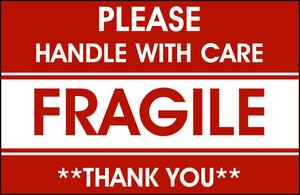Moving is a big deal and it needs to be treated as such. Many times, when people move, they forget to consider the impact their move has on the environment. When you relocate to a new city or to a new home in your current city, you should have the goal of achieving a sustainable move.
What is a Sustainable Move?
When it's time to move, choosing green, biodegradable materials is a good start. A sustainable move is the type of move that's more eco-friendly and includes using the right products to ensure you're not creating more waste.
How to Achieve a Sustainable Move
The first step in achieving a sustainable move is to become self-aware of what it takes. To move in a sustainable way, you have to make the decision to use the right products for your move, specifically the packing and cleaning processes.
If you want to move in a more eco-friendly way, here are a few tips to help you achieve a sustainable move.
Plan Ahead
A sustainable move means you will be making decisions differently than the norm. You won't simply hire a moving company and have them pack everything up in cardboard boxes. This isn't the goal and will create waste you don't want to create.
Instead, you have to plan ahead to use plastic moving boxes and you want to plan ahead to ensure you make the fewest possible trips from the old home to the new home. In addition, you want to keep the three Rs in mind; Reuse, Reduce, and Recycle!
Sort and Donate
Before you start packing up your things to move, you want to go through everything and decide what to keep. You likely have many items you can donate to the local thrift store. In addition, you may have some items you can sell to lighten your load.
There's no sense in wasting effort, boxes, and room in a moving truck to move things you don't need or want. Go through everything before you move and donate anything you don't need or want anymore.
Use Natural Cleaning Products
Not only are natural cleaning products better for the environment, but they are also better for your health. When cleaning your old home and new home, avoid commercial products and choose the best natural products you can find.
Buy Second-Hand Furnishings
For your new home, you can buy second-hand items to furnish the house. If you don't already own the furniture and decor items you want, hit the thrift stores, consignment stores, and second-hand options to find the right choices for you.
Buying second hand ensures no new energy was used to produce the item. This falls under the reuse category and helps to make your move and your home more eco-friendly.
Choose Plastic Moving Boxes
One of the easiest ways to pack up and make your move sustainable is with plastic moving boxes. Since they can be reused by someone else when you're done, you don't have to worry about adding to the waste. Yes, cardboard can be recycled, as long as you don't get it wet or spill anything on it, but plastic moving boxes don't have to be reproduced, they can just be reused. Contact The Chicago GreenBox today and order eco-friendly, plastic moving boxes!
If you want to achieve a sustainable move, use these tips to make your plans. Make sure you keep the environment at the front of your mind and be aware of the decisions you're making during your move.








